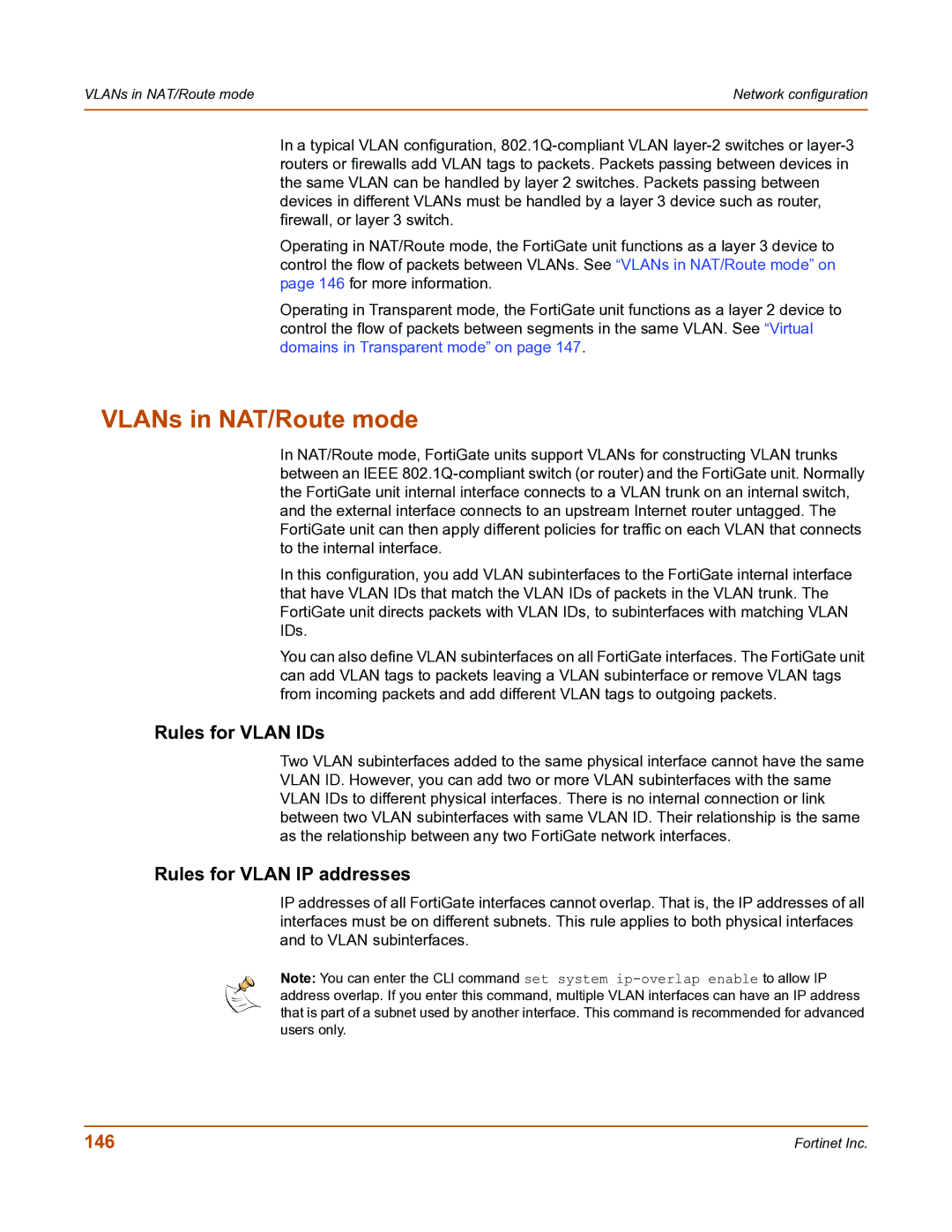
VLANs in NAT/Route mode | Network configuration |
|
|
In a typical VLAN configuration,
Operating in NAT/Route mode, the FortiGate unit functions as a layer 3 device to control the flow of packets between VLANs. See “VLANs in NAT/Route mode” on page 146 for more information.
Operating in Transparent mode, the FortiGate unit functions as a layer 2 device to control the flow of packets between segments in the same VLAN. See “Virtual domains in Transparent mode” on page 147.
VLANs in NAT/Route mode
In NAT/Route mode, FortiGate units support VLANs for constructing VLAN trunks between an IEEE
In this configuration, you add VLAN subinterfaces to the FortiGate internal interface that have VLAN IDs that match the VLAN IDs of packets in the VLAN trunk. The FortiGate unit directs packets with VLAN IDs, to subinterfaces with matching VLAN IDs.
You can also define VLAN subinterfaces on all FortiGate interfaces. The FortiGate unit can add VLAN tags to packets leaving a VLAN subinterface or remove VLAN tags from incoming packets and add different VLAN tags to outgoing packets.
Rules for VLAN IDs
Two VLAN subinterfaces added to the same physical interface cannot have the same VLAN ID. However, you can add two or more VLAN subinterfaces with the same VLAN IDs to different physical interfaces. There is no internal connection or link between two VLAN subinterfaces with same VLAN ID. Their relationship is the same as the relationship between any two FortiGate network interfaces.
Rules for VLAN IP addresses
IP addresses of all FortiGate interfaces cannot overlap. That is, the IP addresses of all interfaces must be on different subnets. This rule applies to both physical interfaces and to VLAN subinterfaces.
Note: You can enter the CLI command set system
146 | Fortinet Inc. |
